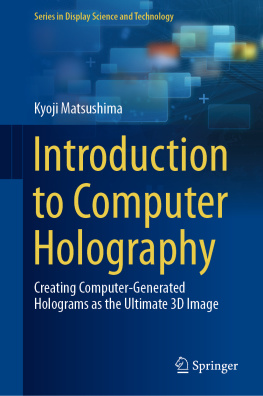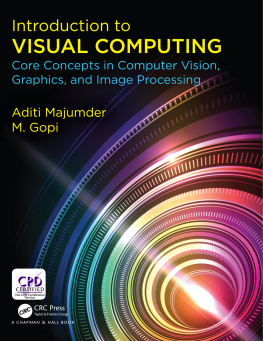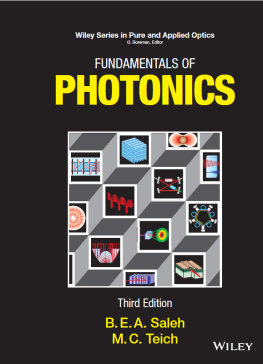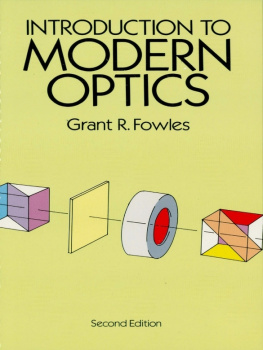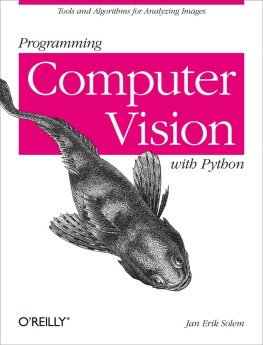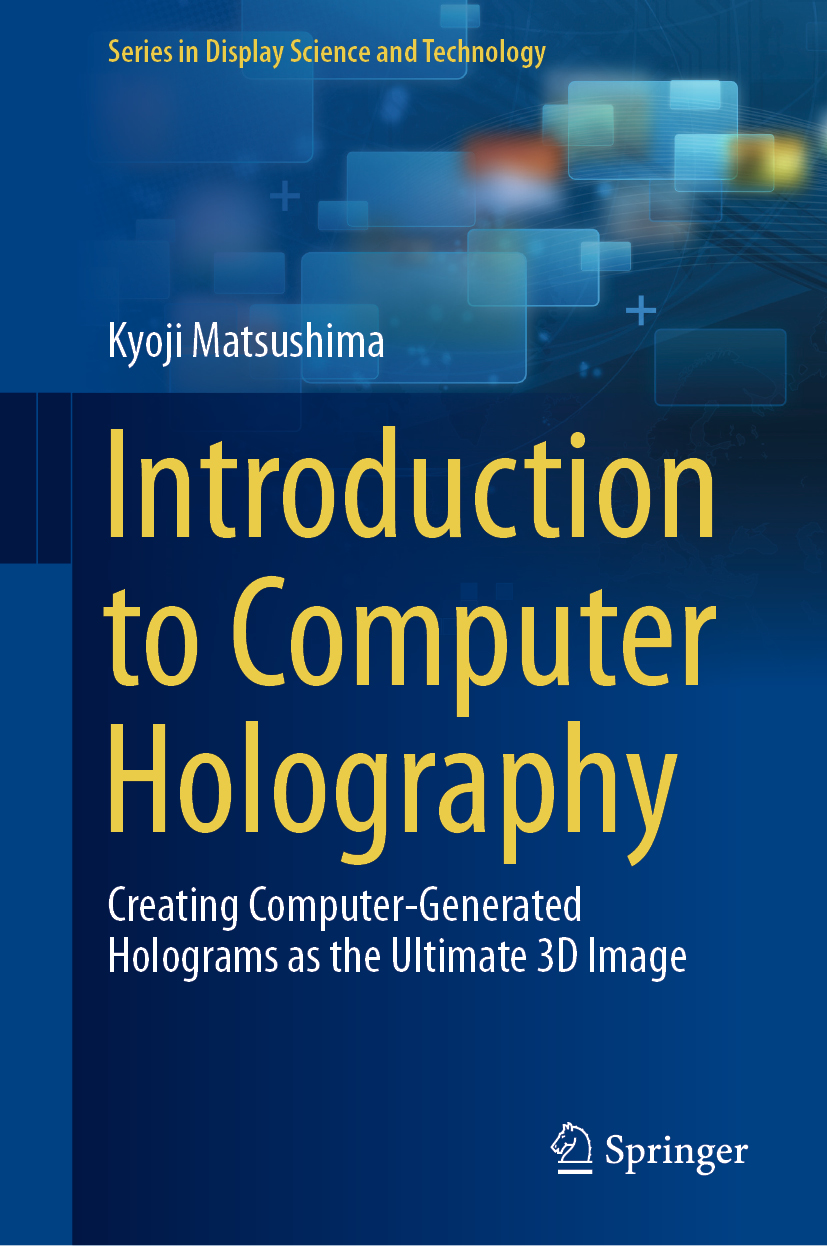Series Editors
Karlheinz Blankenbach
FH fr Gestaltung, Technik, Hochschule Pforzheim FH fr Gestaltung, Technik, Pforzheim, Germany
Fang-Chen Luo
Hsinchu Science Park, AU Optronics Hsinchu Science Park, Hsinchu, Taiwan
Barry Blundell
University of Derby, Derby, UK
Robert Earl Patterson
Human Analyst Augmentation Branch, Air Force Research Laboratory Human Analyst Augmentation Branch, Wright-Patterson AFB, OH, USA
Jin-Seong Park
Division of Materials Science and Engineering, Hanyang University, Seoul, Korea (Republic of)
Kyoji Matsushima
Faculty of System Engineering, Kansai University, Osaka, Japan
ISSN 2509-5900 e-ISSN 2509-5919
Series in Display Science and Technology
ISBN 978-3-030-38434-0 e-ISBN 978-3-030-38435-7
https://doi.org/10.1007/978-3-030-38435-7
Springer Nature Switzerland AG 2020
This work is subject to copyright. All rights are reserved by the Publisher, whether the whole or part of the material is concerned, specifically the rights of translation, reprinting, reuse of illustrations, recitation, broadcasting, reproduction on microfilms or in any other physical way, and transmission or information storage and retrieval, electronic adaptation, computer software, or by similar or dissimilar methodology now known or hereafter developed.
The use of general descriptive names, registered names, trademarks, service marks, etc. in this publication does not imply, even in the absence of a specific statement, that such names are exempt from the relevant protective laws and regulations and therefore free for general use.
The publisher, the authors and the editors are safe to assume that the advice and information in this book are believed to be true and accurate at the date of publication. Neither the publisher nor the authors or the editors give a warranty, expressed or implied, with respect to the material contained herein or for any errors or omissions that may have been made. The publisher remains neutral with regard to jurisdictional claims in published maps and institutional affiliations.
This Springer imprint is published by the registered company Springer Nature Switzerland AG
The registered company address is: Gewerbestrasse 11, 6330 Cham, Switzerland
Preface
It is an undoubted fact that the evolution of digital computers impacts our lifestyles as well as science and technology. It is also reasonable to assume that people will be surprised to see three-dimensional (3D) images produced by a well-made optical hologram, and that they believe that the 3D image is perfect and accurate in its representation. Unfortunately, hologram galleries that exhibit holograms for art and decoration have been disappearing recently, and holograms we see in our daily lives are limited to those on bills and credit cards. Such holograms are interesting because the appearance of the image changes when the observer changes his or her viewing angle, but they do not look like 3D images. This decline of holography for 3D imaging is attributed to the fact that holography has not yet evolved into a digital technology. It is not possible to store the digital data of an optical hologram in a digital medium and it is not possible to transmit it through digital networks.
The idea of creating and handling 3D holographic images using computers has a long history. In fact, the origin of the idea goes back to the days right after the actualization of 3D imaging by optical holography. However, computer-generated holograms (CGH) comparable to optical holograms were not developed until recently. This is entirely due to the tremendous data sizes and computational efforts required to produce CGHs capable of reconstructing perfect 3D images. The creation of outstanding large-scale CGHs is, in a sense, a fight against the availability of computer resources at a time. The required computational capabilities often exceed those of state-of-the-art computers. Algorithms and techniques available in the literature are often ineffective because they are too time and/or resource consuming.
This book does not intend to provide all the various techniques proposed in computer holography extensively. The techniques discussed herein are instead ones that have been confirmed and proven to be useful and practical for producing actual large-scale CGHs whose 3D images are comparable to those of optical holography. Some of these techniques are of an atypical nature as well. It is both unfortunate, and a little delightful for researchers like me that such techniques are still far from completion. Thus, I intended this book to provide just a snapshot of these developing technologies.
When we produced the first large-scale CGH, The Venus in 2009, approximately 48 h of computation time was needed. An expensive computer mounted on a server rack was used. The computer was too noisy to be kept in a room where one studies, owing to the cooling mechanism. Now, the same CGH can be calculated in approximately 20 min using a quiet desktop computer. This is mainly due to the continuous development of computer hardware and partially due to the development of our technique with time.
This book is for any researcher, graduate or undergraduate student, who wants to create holographic 3D images using computers. Some of the chapters (e.g., Chaps.) give hints on how to handle such large-scale wavefields on computers.
I am sincerely grateful to Prof. Nakahara, who was a colleague at Kansai University, co-author of many papers, and someone with the same enthusiasm for creating CGHs as me. Many CGHs introduced in this book were fabricated by him. We visited many places together to present our work on CGHs. I would also like to thank Dr. Claus E. Ascheron for his strong recommendation to write a book on computer holography. He was an executive editor of Springer-Verlag when I met him for the first time and is now retired. This book would never have been written if he had not patiently persuaded me for over 3 years. I regret that I could not complete this book before his retirement. I am also grateful to Dr. Petr Lobaz who reviewed my manuscript carefully and gave me many suggestions based on his profound knowledge and enthusiasm for holography. I am also thankful to my former and current students: Dr. Nishi, Mr. Nakamoto and Mr. Tsuji, who did reviews of the text and formulae. I am grateful to them, and any mistakes that may have crept in are entirely mine.

